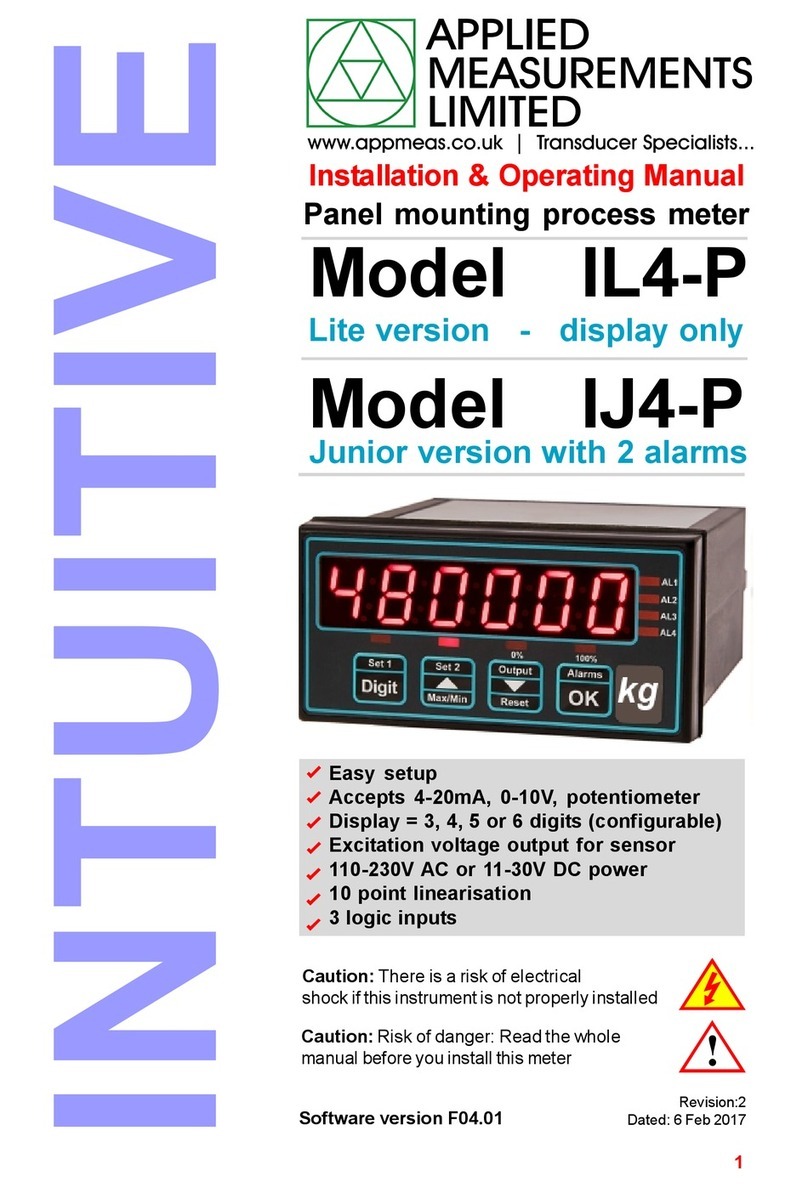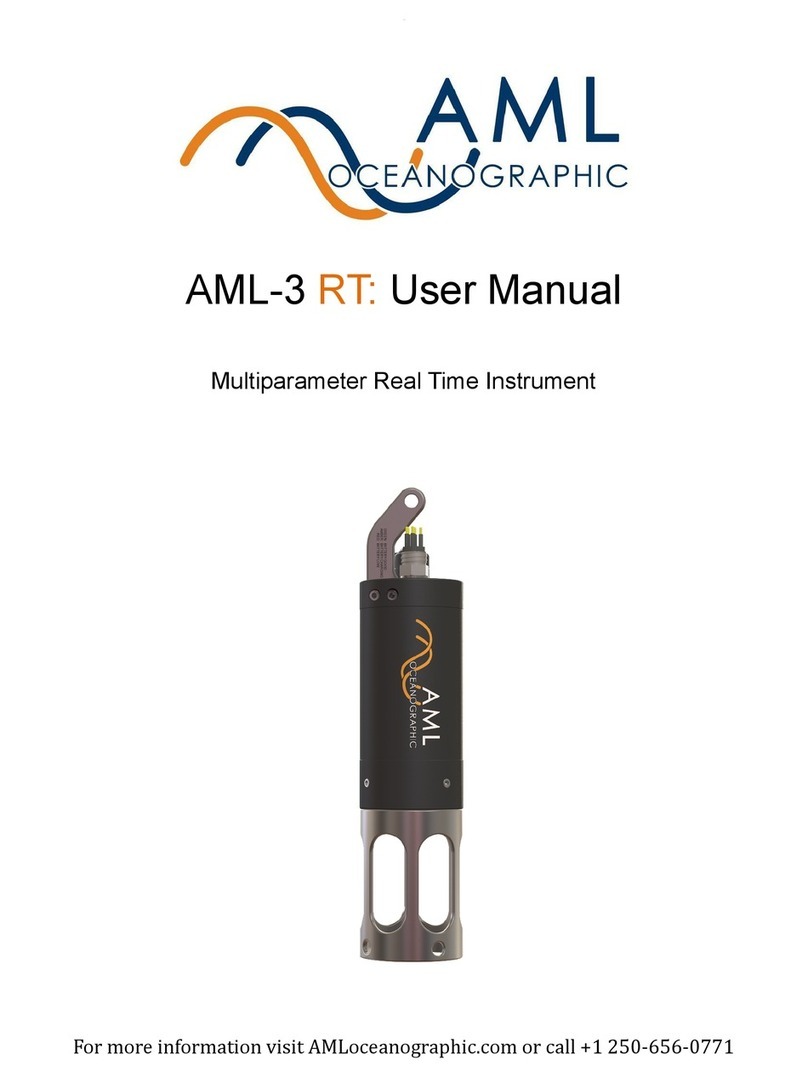User Manual for AML Oceanographic BaseX2
1
Table of Contents
General Description of the Instrument.........................................................................................2
Where Do I Start? .......................................................................................................................3
Shipping & Receiving ..................................................................................................................4
Receiving an Instrument .........................................................................................................4
Returning an Instrument to the Factory...................................................................................4
Using the Instrument ...................................................................................................................5
Pressure Ratings ....................................................................................................................5
Pre-Deployment Procedures...................................................................................................5
Supported Sensor Configurations...........................................................................................6
USB Wireless Adaptor ............................................................................................................7
Installation.........................................................................................................................7
LED Indicators ........................................................................................................................8
Configuring Sampling Parameters Using SeaCast .................................................................9
Configuring Sampling Parameters through the Terminal ........................................................9
Accounting for Atmospheric Pressure Variations at the Surface...........................................10
Logging a Profile...................................................................................................................10
Monitoring Real Time Data ...................................................................................................11
Post-Deployment Procedures ...............................................................................................12
Viewing your Data.................................................................................................................12
Maintaining the Instrument........................................................................................................14
Periodic Maintenance ...........................................................................................................14
Battery Care..........................................................................................................................14
Battery Life............................................................................................................................14
Charging the Lithium-Ion Batteries........................................................................................15
Communications .......................................................................................................................16
PC Settings / WiFi.................................................................................................................16
PC Settings / Serial...............................................................................................................16
Output Formats.....................................................................................................................16
Default Output Format.....................................................................................................16
Default Example Outputs: ...............................................................................................17
Support .....................................................................................................................................18
Troubleshooting ....................................................................................................................18
Contact AML Oceanographic................................................................................................21
Appendices ...............................................................................................................................21
Commands ...........................................................................................................................21
IP Address ............................................................................................................................22
Command Addressing (WiFi vs Instrument Mode)................................................................22
Command Listing..................................................................................................................22
Technical Specifications .......................................................................................................26
Ordering Codes.........................................................................................................................28
Regulatory Information..............................................................................................................29
Warranty ...................................................................................................................................29
Technical Overview Drawings...................................................................................................30





























